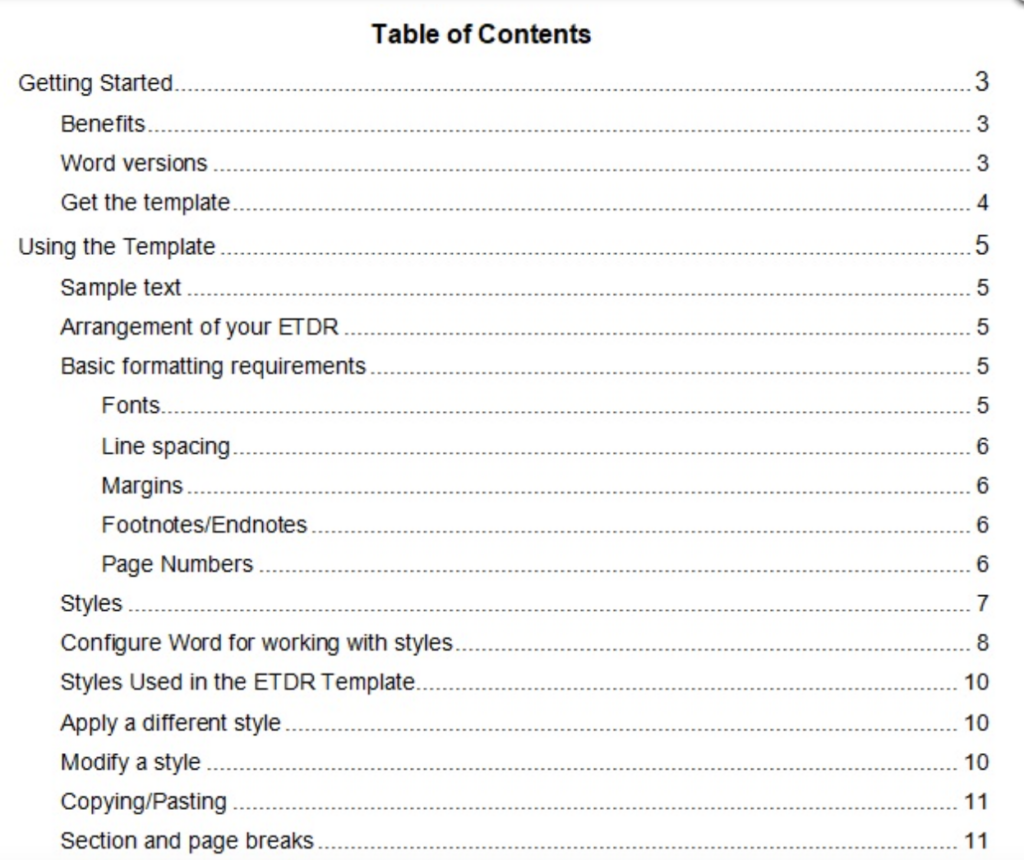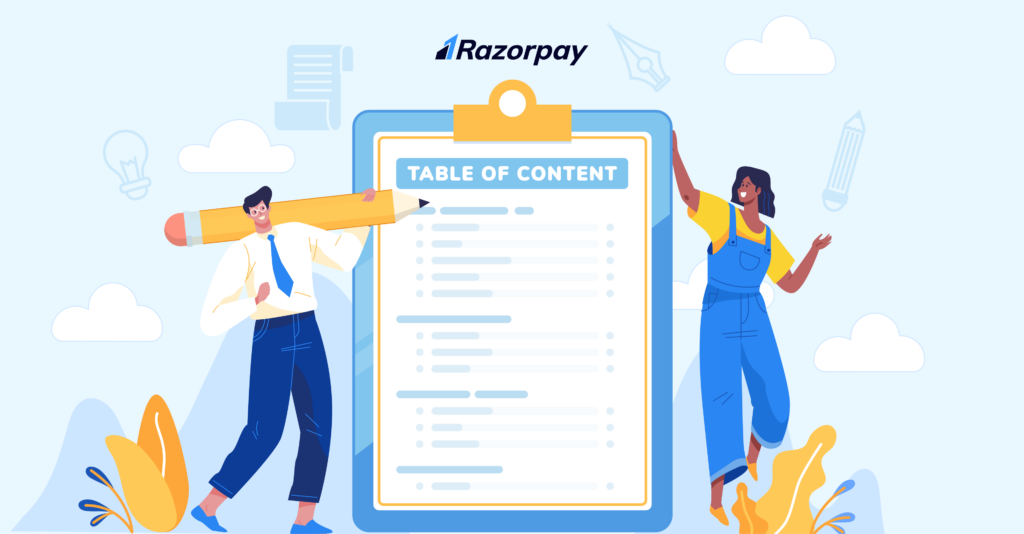The Table of Contents, commonly termed TOC by Content Writers or Technical Writers, is a list of Headings and Subheadings set at the beginning of a guide or article, including corresponding page numbers to indicate the topics included in the said piece of document.

Why is the table of contents important
The TOC has remained a significant part of the documentation for ages. TOC has found a place, be it Installation and Configuration guides, User Guides, Admin Guides, or 2-3 pager Help articles.
- Lists important topics and subtopics: A TOC lists all the important topics and subtopics discussed in a document. Particularly useful for long documents and articles where the users scan through the TOC to understand if the document includes the information they are looking for.
- Improves scannability: A well-structured TOC helps to find the appropriate document section quickly.
- Improves user experience and attention: When a well-formatted TOC is added to a document, the user can decide if this is the article they should read or jump to the right article or section of the same article. It encourages users to explore more articles and self-help.
When you write documents or articles, it is vital to set the correct TOC to bring in the intended group of audiences and get their attention.
How to set table of contents
There are two approaches to setting the TOC of a guide or an article.
- Decide the heading or subheadings of the articles and then develop the idea. The list of headings and subheadings make up the TOC.
- Develop the idea and then structure your article in appropriate sections and subsections. These sections and subsections fall under different levels of headings and subheadings, which make the TOC.
Which is a better approach? Well, both work. The second option is my favourite. With the second option, I can let my thoughts flow without any constraints, and once I am done, I structure them under appropriate headings and subheadings and try to bring in a logical flow.
General Guidelines
- Set a logical sequence of Headings and Subheadings in your article.
- Make sure that you set the appropriate levels for Headings. The heading level defines a section’s importance and logical placement within an article.
- The TOC should be concise. A TOC running into more than 3-4 pages is a total turn-off for your readers.
- Add page numbers in your TOC.
- Use the appropriate styling and template in-sync with your document style.
- Use interesting yet to-the-point headings and subheadings in your document.
- The language, tone, and style of your headings should be consistent.
- Keep your TOC up-to-date as you polish and update your document.
To add a Table of Contents to your document:
Most editing tools and software can auto-generate a TOC based on the headings and subheadings you add to your document.
You should use the appropriate styling/template so that the software can automatically detect the headings and subheadings and set the TOC correctly.
These tools provide you with some basic templates and styles for the TOC. For example, if you use Microsoft Word, you can add TOC under the References section with a few default options and a custom option to customise your TOC styling.

Where to Place Your TOC
You would want your audience to know what is in the document before they start reading it, isn’t it? You should place the TOC after the Document Cover page and before the document’s content starts. The TOC should have a heading too. For example, Contents or Table of Contents.
Table of contents on web layout
TOCs are equally important when writing on a web layout. Most documentation websites have a left-hand side TOC to indicate how the articles are structured and placed.
Many articles have an On this Page TOC to let the readers know what topics are covered in the specific article.



Features
We recommend the following while designing TOC for your articles on the web:
- Set the appropriate levels, groups, and styles: Based on how many levels deep your TOC runs, you must set the correct number of levels, group them appropriately and style your TOC. This is important if you have more than 3 levels-deep TOC as there will be factors like space crunch, readability, and user experience. You also have to consider the different devices the users use to view your website
- Proper design and UX: Work with your Designers and UX Experts to ensure that your users have a smooth experience while moving between articles and know where they are on the website
- Ability to Show/Hide TOC: A few sites use a static TOC, while a few provide an option to Show/Hide the TOC to get more real estate for the content on the page. Choose your best bet
- A filter and Search option: Adding a Filter or Search option in the TOC makes it easier to find the correct articles, especially if you have a long TOC and multiple levels in the TOC
- On this page section: This is useful for long articles, either on the top or right side of the article (preferred). These should be clickable with good designs indicating where the user is on the article


